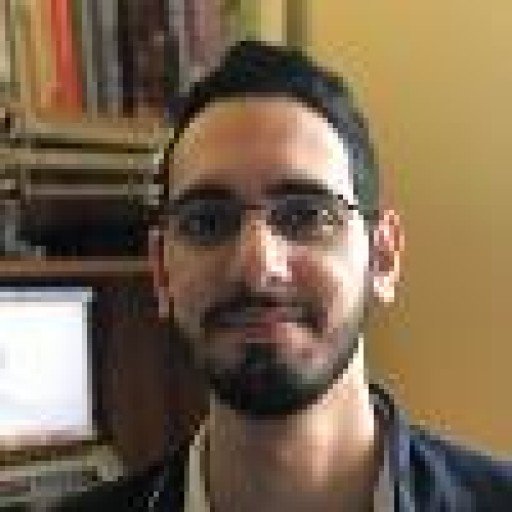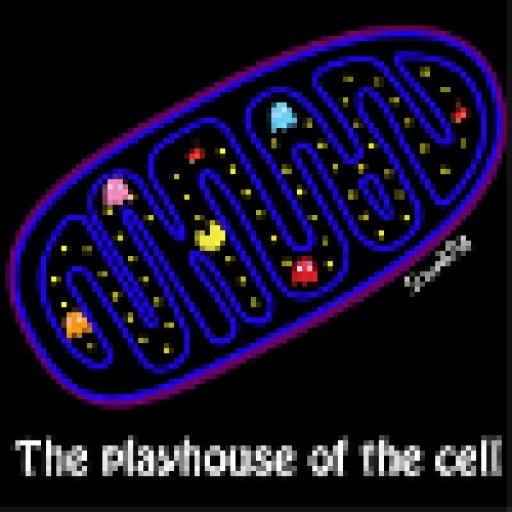Detailed Plan
<u>Background</u>
This is a continuation of our successful Fund 6 proposal: osNFTs for science popularization ( <https://cardano.ideascale.com/a/dtd/osNFTs-for-science-popularization/369965-48088> ).
First, we would like to thank the Catalyst Community for your trust and support during Fund 6, where we were ranked 3rd in the 'NFT Business Models' challenge. We were thrilled to discover that our proposal was the least downvoted inside that category and are humbled to see that the community shares our ideals for a world with better science.
Our previous proposal focused on the most basic aspects of our project
- Defining the OpenScienceNFT (osNFT) standard.
- Building a basic UI for our osNFT marketplace.
- Start developing a community of academics around our project.
Here's a quick overview of what has happened since Fund 6
- We have started building the infrastructure for hosting NFT data on Arweave to ensure permanent storage.
- We have made progress in identifying key concepts in IP (Intellectual Property) and copyright issues around previously published work. More on this below.
- Our team has nearly doubled in size, from 5 to 8 members. New members: Louis Gendron: front-end and web developer. Maude Dumont-Lagacé: Scientific advisor. Yahya Benslimane: Networking strategist in the academic sphere.
- Started developing a website and social media accounts as part of our outreach strategy.
- Our tokenomics strategy is being carefully designed to ensure that our philosophy is baked into our smart-contracts. See osNFTs section for an overview of how value will be generated.
<u>Team</u>
Core team:
- Albert Feghaly: Project leader and blockchain developer (Plutus smart contracts).
- Louis Gendron: Web and blockchain developer (Arweave NFT data storage and permaweb hosting).
- Jordan Quenneville: Backend developer.
- Jack Bauer: Science and art communicator, osNFT and logo design.
- Yahya Benslimane: Networking coordinator within the academic world.
Advisors:
- Roger Palou: Academic advisor and first believer in this project.
- Tariq Daouda: Infrastructure and AI expert.
- Maude Dumont-Lagacé: Scientific advisor and art/design expert.
More information about the team can be found at https://intellart.ca/#/team.
<u>Project tracking</u>
You can find/reach us at:
- <https://intellart.ca>
- <https://github.com/intellart>
- <https://twitter.com/opensciencenft>
All of our code will be open-source to favour reusability and collaboration, but also to stay consistent with our philosophy.
Weekly updates are and will continue to be pushed to <https://intellart.ca/#/weeklyUpdate> in a very succinct manner to allow for fast progress tracking and auditability. Moreover, starting from January 2022 we will be writing short blog articles on intellart.medium.com to let the community in on our successes, struggles and evolution.
<u>Purpose of this proposal</u>
The goal of our Fund 6 proposal was to focus on establishing a baseline for our idea, gauging the community's enthusiasm and having enough resources to get us started. Now is the time to start focusing on deliverables and building a smooth user experience to facilitate on-boarding. We have detailed our next steps in the sections below.
<u>Bird's-eye view</u>
This proposal exists to enable the development and scaling of our OpenScienceNFT Marketplace, where content creators (scientists and academics) will be able to share and monetize their work. This will be made possible through NFT technology where perpetual royalties go directly to the authors and fund further science. However, this is not the only product we are building. Apart from this project, we are also working on a decentralized peer-review ecosystem called PubWeave. Eventually, we will be connecting both projects (osNFT Marketplace + PubWeave) to a treasury whose purpose is to ensure perpetual funding for scientists, especially those in unfavourable economic climates. Governance will be slowly outsourced to the community through a Cardano-based DAO with cross-chain capabilities for NFT management.
<u>Legal considerations</u>
As described in our Fund 6 proposal, we are exploring IP and copyright avenues for osNFT monetization strategies. Previously published academic work, especially those created within academic institutions, entail important IP rights considerations. At the very least, there will need to be defined agreements between a researcher that has created content using a University's resources and it. We are not against the idea of establishing a legal framework for such interactions, but this is out of the scope of our initial phases for this project. Instead, we will have 2 categories of osNFTs: monetizable, and non-monetizable osNFTs.
<u>osNFTs</u>
Please note that the model we are describing in this section would require native tokens to function optimally, but for the sake of simplicity, 'token' here refers to ADA.
As mentioned above, we will have on our platform 2 kinds of osNFTs.
1. Non-monetizable osNFTs: Open-access scientific publications, especially those tied to an academic institution, may not, at first, be a source of revenue for authors. However, they will still be mintable and tradable. This sounds paradoxical at first, because why would anyone trade NFTs if they can't get anything in return? The answer is that money is not the only value that can be extracted from such a system. In the academic world, a 'currency' could simply be the scientist or institution's reputation and recognition by their peers. This means that osNFTs can become a way for researchers or labs to endorse and signal what they perceive to be relevant science. Let's also not forget the 'ethos' of academic research: a not-for-profit activity (when talking about individual labs of course; universities, publishing companies and networking platforms are a different story). More on this in the 'NFT staking' section.
2. Monetizable osNFTs: One of the aims of this project is to allow the scientist to monetize their work. Using their published academic article might not always be an option, but there is no problem with monetizing derivatives of the work. For example, authors can create graphical abstracts or summaries of their work, and mint them as osNFTs, which can be bought, traded, and profited from. Additionally, our main focus with monetizable osNFTs would be the creation of frameworks for a modular generation of science-inspired NFTs. The 'osNFT frameworks' section goes into the details of this concept. This framework-centric marketplace can be thought of as a meta-NFT marketplace, or a marketplace for building frameworks for creating NFTs. With time, we can envision a community that will create these generative frameworks but also curate them to ensure scientific rigour. At the initial stages of the project, curation will be performed by us, the founding team. Outsourcing to the community will be a gradual process that will co-evolve with our DAO.
<u>NFT staking</u>
What do we mean by NFT staking in the context of non-monetizable osNFTs ? Instead of buying an NFT, and then selling it expecting a return on investment (ROI), one would simply 'borrow' an NFT. One way to do this would be to stake a certain amount of tokens against an osNFT, such as a peer-reviewed open access academic article, and because the osNFT is borrowed instead of bought, the user can return it to the marketplace, and receive their tokens back. This method also creates massive NFT liquidity, solving a major problem that most new NFT projects face. The only platform that uses this model that we know of is the Arweave protocol's wiki website: arwiki.wiki, where each article is sponsored by a certain address. This 'liquid NFT' model was originally conceived at Arweave (where we will be hosting PubWeave). Lastly, because we are asking users to participate in a system with no ROI, we cannot possibly ask them to pay transaction fees. Enter Ouroborous. Cardano is a beautifully crafted proof-of-stake blockchain, and staking tokens generates rewards. We will focus on taking advantage of this property to offset transaction fees that would otherwise be paid for by users. A lock-up period will be required depending on the amount staked.
<u>osNFT frameworks</u>
A quick illustration of what we mean by osNFT framework: Consider a cell. It can be an animal, plant or bacterial cell. It can also contain many different types of structures. Other characteristics could include the developmental stage, the health of the cell, its size, etc. Our framework would generate a random combination of those features, in a scientifically rigorous way, in addition to text and annotations with the aim of teaching something new to the person who mints or interacts with the NFT.
Another example is the developmental stages of C. elegans (a popular worm used as a model organism in research), the PhD thesis of our co-proposer @sciwalkart ( <https://www.instagram.com/sciwalkart/> and <https://sciwalkart.bigcartel.com/> ) who is defending his thesis this month! C. elegans has interesting particularities that makes it a great test-case for our framework. Features would include: Sex of the animal (male vs hermaphrodite), cell count dictated by the developmental stage, optional transduction with fluorescent protein to add some color.
The marketplace will be kick-started with the following 2 frameworks, the first of which will coincide with the public launch of the marketplace, and the second following closely:
- Framework #1 (which will coincide with the public launch of the marketplace): C. elegans developmental stages.
- Framework #2: Modular cell engineering.
<u>Impact</u>
In our roadmap, we define long-term goals as having the following set of functionalities:
- A DAO-mediated self-governance system.
- Creation of rigorous scientific content through peer-reviewed validation.
- Compensation of scientific work regardless of a person's socio-economic background.
Cardano's philosophy and roadmap was a perfect fit for our project. Successful implementation of our marketplace would mean an influx of new users to the Cardano ecosystem. Cardano's use case would see greater expansion as a consequence.
Interestingly, successful implementation of our staking model would substantially expand ADA's use-case. Unlocking the potential of staked ADA with our endorsement mechanism would have 2 main benefits: creating additional utility for otherwise locked ADA, and further incentivizing ADA staking, which would enhance network security and might even help reduce price volatility. We are exploring ways of doing this, including the possibility of minting native tokens backed by an amount of ADA that would be staked or unstaked depending on the activity of these native tokens. We are still in the early stages of exploration for this milestone and cannot guarantee its success. Please keep in mind however that failing to implement this feature would not in any way diminish the scope of our project.
<u>Execution</u>
Our 3-step roadmap for this submission:
- 3 months – Smart contracts completed; Cross-bridge NFT minting (data+metadata) completed; Framework #1 progressing.
- 6 months – Public launch of the marketplace; Framework #1 (see osNFT frameworks section) completed; More than 100 minted osNFT from Framework #1; Focus then shifts to non-monetizable osNFTs; Endorsement-based staking is being tested; Ongoing discussions with labs potentially interested.
- 12 months – More than 50 labs enrolled and interacting with non-monetizable osNFTs; More than 1000 minted osNFT from framework #1; Framework #2 completed as well; Guidelines for the community to build their own frameworks; Gathering feedback and iterating with enhancements.
<u>Further considerations</u>
Ideally, we want every aspect of our project to be decentralized, from user identification, to data storage, to governance, to web hosting. However, the infrastructure for web3 is still in its infancy, so we will need to slowly phase out every one of these aspects very carefully.
- Data storage is the easiest of the bunch, and will start from a point of decentralization as our NFT data will be permanently stored on Arweave.
- Governance will slowly move to the DAO as our project evolves and gains traction.
- User identification will ideally be managed by a decentralized identity platform, such as Atala Prism, to bridge NFT users to established identifiers in academia such as ORCID and Google Scholar. We have strategically opted out of asking for funds for this specific task, as we wish to focus on building the infrastructure for the marketplace during this round. We simply mention it here because it is an important part of our roadmap.
- Web hosting is a tricky one. In an ideal world, even our front-end would be decentralized on Arweave's permaweb. We need to keep in mind however that traffic load can be unpredictable, and in a super-optimistic scenario, thousands (or even millions) of users might want to access our marketplace. We need to be ready for this if (when!) it happens. For this reason, we will start with a traditional website, hosted on a cloud infrastructure provider ) with content delivery network (CDN) capabilities (for example, at the time of writing, our website is hosted on a DigitalOcean droplet). We will also need to use a database management tool for caching and storing user data, such as Redis or ArangoDB. After all this is done, we can start experimenting with decentralization and carefully migrate what we can, one aspect of the website at a time.
Similar to our user identification strategy, we will be not asking for substantial funds for marketing just yet. A small proportion of our Funds 6 and 7 will be allocated to marketing and outreach. Our focus during the first 3 to 6 months is building the infrastructure. We will however be designing our marketing strategy during that time-period. Once we provide the community with a functional ready-to-use product, we might ask for additional funds for marketing.
A quick note on funding: We are gradually working on securing funds needed to get us started, incrementally, until we can start generating our own revenue through the marketplace. Our frameworks #1 and #2 will also serve as revenue streams for our treasury by way of royalties, which we would fix at a percentage as high as 20-30 %.
<u>Budget</u>
- Smart contract engineering – 50$/hour * 40h/week * 6 weeks = 12,000 $
- UI and backend development – 35$/hour * 40h/week * 6 weeks = 7,200 $
- Literature review, research and networking – 25$/hour * 15h/week * 12 weeks = 4,500 $
Total = 23,700 $





